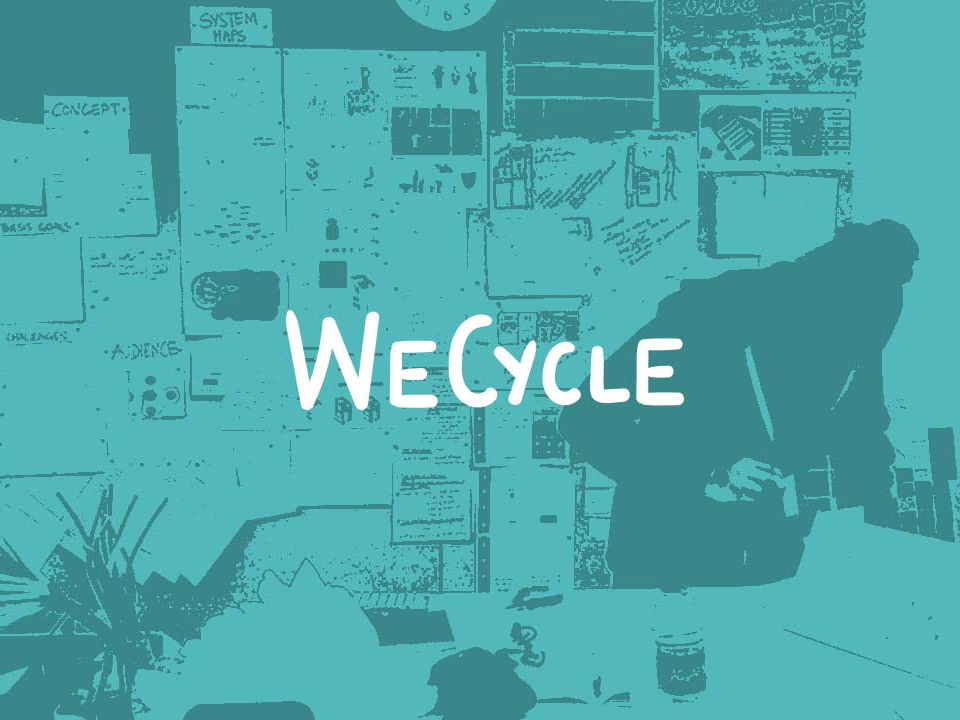Joe's Journey
Joe's Journey is a story about a first time EV user and the series of adventures that he goes through to manage issues related to EV charging mainly – Range anxiety and charging time boredom.
SUMMARY
CONTEXT
Joe's Journey was an interdisciplinary group project I worked on during my internship with GTB and Kinetic Optimism Studio in Detroit, Michigan.
CHALLENGE
The challenge was to propose behavioral scenarios that have the ability to turn the EV "charge time" into an unexpected driver of EV adoption, particularly charging outside your home.
SOLUTION
The proposed scenarios were centered around using charging time to facilitate human connection and well-being to counter the adverse impacts of charging time anxiety and boredom.
ROLE
The project duration was 10 weeks. I worked alongside Anthony Estolano , Arjun Thirupatthi and Elizabeth Parks to brainstorm ideas for the scenarios. As the Invention Designer on the team, my responsibilities were conducting user research, analyzing data and developing scenarios based on team discussions. We worked on the project under the mentorship of Wojtek Szumowski and Jin Kwag.
PROCESS
Our process followed a define, empathize, develop and test pattern. We used research and ideation tools on every stage to validate our decisions.
Important: The proposed scenarios were supported with wireframes of the application to be used for accessing the experiences. Due to confidentiality agreements, they have been left out of this case study.
*****
JOURNEY
UNDERSTANDING THE PROBLEM
We began with varied questions to deconstruct the brief and understand the real human problem of EV adoption. Preliminary research through forums, published reports and speaking with current EV users helped understand the real concerns people had in considering purchasing an EV.
I came across various studies conducted to explore drivers’ perceptions of electric vehicles (EVs) and determine factors that hinder EV adoption in The United states.
The two main concerns for users were:
• Range Anxiety
• Charging Time Trauma/Boredom
A 2018 study conducted by The Harris Poll on behalf of Volvo to learn about user perception of EVs, states that range anxiety is the top most concern for users. This is despite the fact that majority of the users' charge at home and commute within the range limit of EVs*.
*According to the Department of Energy, the average EV in the U.S. can travel 114 miles between charges and according to the Bureau of Transportation Statistics an average driver in the United States drives 29 - 40 miles a day.
A study from the Massachusetts Institute of Technology states that energy requirements of 87 percent of vehicle-days could be met by an existing, affordable electric vehicle.
Further the Volvo study finds that 65 percent of EV drivers had range anxiety when they first purchased an EV but it went away after a few months. Thus range anxiety was most concerning for non-EV users.
There is a disconnect in the perception of non EV users with the performance of an EV and their commute requirements resulting in range anxiety.
Lack of fast charging infrastructure to support long journeys further negates the experience. While refueling at a gas station is a five to ten minute pit-stop, filling up an electric vehicle could take up to an hour or more. This gives way to charging time trauma or boredom.
Although charging times are on their way to shrink as little as 10 minutes, it is still several years away from becoming a reality.
EMPATHIZING WITH USERS
We spoke with non EV users in person and through forums, to learn about their perceptions. We created an empathy map based on the interviews, to develop a shared understanding of who we'd be designing the scenarios for.
"I purchase a car to work for me 100 percent of the time, not 87 percent of the time. I don't want to get stuck."
Electric vehicles cost more on an average than traditional cars thus investing in an EV comes with expectations of complete reliability. Lack of charging infrastructure coupled with a relatively short range translates to an unreliable investment, regardless of the context of real requirements.
Additionally long charging times make the refueling experience tedious and constricting. Users are not looking forward to finding and taking hour long pit stops on their way, when gasoline cars need only a few minutes and are available everywhere.
There is also a notion that electrification and EV charging infrastructure just isn't there yet, creating a disconnect in the EV ownership experience as something in the future.
Range anxiety is not just a concern about distance, but also about the experience of being stranded, which gives way to other anxieties about personal well being.
Users' negative perceptions mostly surrounded long distance travels. The lack of EV charging station availability, inconvenience and boredom of EV charging time on long distance travels make purchasing an EV an unreliable choice for these users. Hence, we focused on the long distance travel experience to develop the scenarios.
The two major questions we asked at this point were:
• How can you make people feel safe while driving long distances with an EV?
• How can you make the charging time 'appear' to pass quickly?
Benchmarking Existing Solutions
We looked at some current solutions that help EV users manage their charging.
Building an EV Rest Stop
(Source: Business Insider)
A dedicated Tesla Supercharger customer lounge in Kettleman, California includes access to food and craft beverages, restrooms, comfortable seating, WiFi and Tesla apparel for sale. The new customer lounge also features a kid’s play wall, pet relief area and outdoor space for families.
Helping with Wayfinding
(Source: apps.apple.com, plugincars.com)
Plugshare is a mobile application and an online tool that allows electric car owners to locate and optimize the use of EV charging stations. It gives users the ability to add, review, and edit station information, and to safely share their own private residential charging station with other electric car drivers.
Being comfortable, relaxed and entertained can help make charging time appear to move quickly for the user. Knowing where charging stations are available, can help make them feel safe by planning trips accordingly.
HYPOTHESIS
How might we make EV charging, an activity people look forward to?
We came to the conclusion that the best use of charging time was making it an experience that users could look forward to. The goal was to make charging time secondary to the experience itself, while helping the user make more valuable and meaningful use of their time.
DEVELOPING SCENARIOS
With a basic understanding of the user's perceptions and expectations of EV charging, and having set benchmarks for the experience, we moved to learn the possibilities of the future and determine varied relevant scenarios.
We used a scenario matrix to explore the possible worlds created by the most important critical uncertainties that affect the EV charging time experience - charging speed and charging station availability.
The scenarios helped contemplate the different ideas that could make EV charging an enjoyable experience.
We extended these ideas into sketches to shape the scenarios and imagine the experience that makes EV charging a relaxing and enjoyable activity.
(Below) Sketches by Anthony Estolano and I
Through reviews with Jin Kwag and Wojtek Szumowski, we narrowed our ideas to 3 scenarios inspired by the possibilities of the different worlds.
We presented the scenarios as a story about a long distance journey of a character we developed based on the empathy map.
Scenario I : Electric Social
This is Joe. He’s driving from LA to Las Vegas in his EV to see his girlfriend. He realizes he has only 40% battery left, to which he would usually panic - but not today. He quickly heads towards the closest Electric Social, an EV users recreation and social engagement cafe by the highway.
Joe plugs his EV to the station’s socket and hangs around the place while he gets some charge for his 30 minute time slot. He talks to his girlfriend on the rooftop patio, gets himself some beverages, leaves messages on the community chalkboard and makes new friends. Soon the app informs him that his charging time is up and Joe picks up and heads back on the road.
(Below) Mood Board by Anthony Estolano
Scenario II : Open Porch
After a couple of hours, Joe exits the highway and pulls into a local residence. He meets Todd, the owner of the house – whom he came to know through Open Porch which is much like AirBnB for EV owners.
Over the next hour Joe and Todd sing, play checkers, eat cookies and argue over who would win a fight between a taco and a burrito, all on Todd’s front porch. When the hour is up, Joe takes a selfie with Todd and posts it on the Open Porch app giving Todd a 5 star rating and paying him the electric fee on the app before he sets out again.
(Below) Mood Board by Anthony Estolano
Scenario III : Power Napper
It’s late and Joe still has a few more hours to go. After almost dozing off while driving, he decides to get some rest. He opens locates the nearest napping pod and heads there to get some charge for his car and himself.
He reaches the pod, plugs in his EV to unlock it and enters the pod to enjoy the aromatic and calming environment while he takes a power nap. He wakes up refreshed and finally overcomes the last bit of the road that stands between him and his girlfriend.
(Below) Mood Board by Anthony Estolano




